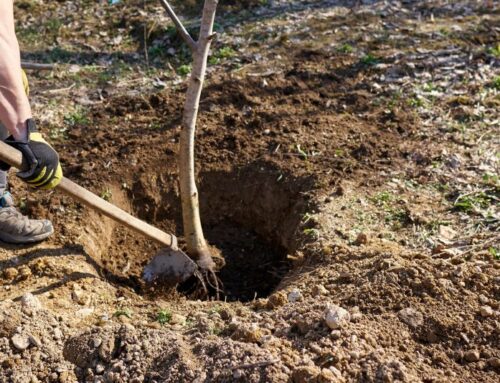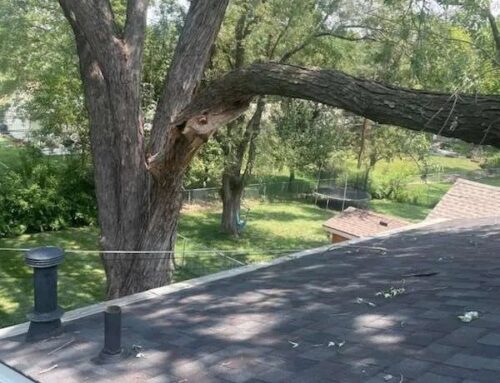Lichens are fascinating organisms. Their layered textures and various colors often add a mysterious charm to trees. But not everyone is a fan. Some people find them unsightly and ugly, especially when they cover large portions of a tree. Lichens are also commonly found on declining and dead trees, creating an eerie, “haunted” look. So, you may be wondering, are lichens bad for trees? Let’s dive in and find out!
What is Lichen?
Lichens are unique organisms made from a symbiotic relationship between fungi and algae or cyanobacteria. Symbiotic means that both partners benefit from the relationship. The fungus provides structure and protection, while the algae or cyanobacteria photosynthesize to produce food for the partnership. Together, they form a resilient organism capable of thriving in harsh environments, from rocky cliffs to tree bark.
Lichens come in various shapes, sizes, and colors. Some are flat and crusty, others are leafy or bushy, and they can range in color from pale gray to bright orange. Despite their appearance, lichens are not plants and are not parasites.
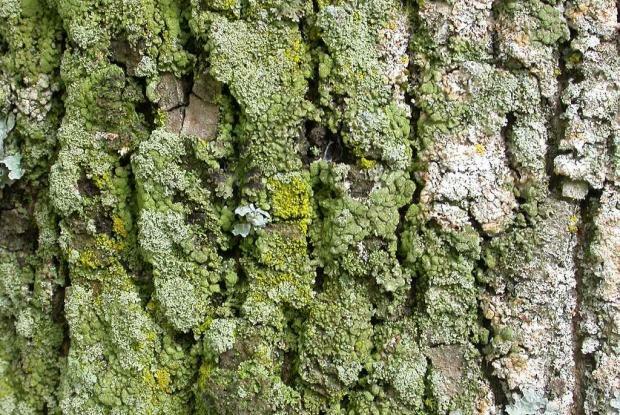
Why Does Lichen Grow on Trees?
Lichens grow on trees primarily because tree bark offers a stable surface to anchor to. Unlike parasitic organisms, lichens do not invade the tree’s living tissue. Since lichens don’t have roots, they merely attach to the bark surface without drawing nutrients from it.
The presence of lichen is often associated with specific environmental conditions, such as:
- High Humidity: Lichens thrive in moist environments, making them common in areas with consistent rainfall or high humidity.
- Clean Air: Lichens are sensitive to air pollution and are often found in areas with good air quality. Their presence is often used as indicators of environmental health and air quality.
- Slow Growth: Lichens grow very slowly, so their appearance on a tree indicates long-term stability.
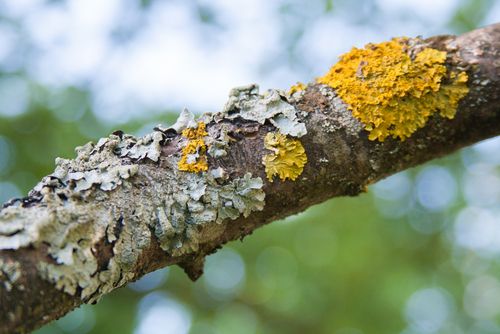
Does Lichen Harm The Tree?
Good news – lichens are not actually harmful to trees! They do not “steal” nutrients or water from the tree. Instead, they rely on their own photosynthesis and moisture from the environment to feed themselves.
However, lichens are often found on declining or dead trees, which can lead to a misconception that they cause harm. In reality, lichens are opportunistic and tend to colonize trees with slower growth or reduced canopy density because these conditions provide more light and surface area for growth. If a tree with lichen is unhealthy, the underlying cause is likely unrelated to the lichen.
That said, heavy lichen growth can sometimes exacerbate problems by:
- Retaining moisture on the bark, which can encourage fungal growth.
- Obscuring signs of other issues, such as cracks or infestations.
Are There Any Benefits of Lichen?
Lichens offer several ecological benefits, including:
- Air Quality Indicators: Lichens are excellent bioindicators of air quality. Their presence often suggests low levels of pollution.
- Ecosystem Support: Lichens provide habitat and food for various insects, birds, frogs, and other wildlife.
- Soil Enrichment: When lichens fall off trees, they decompose and contribute organic matter to the soil.
- Aesthetic Appeal: To many, lichens add a unique, natural beauty to trees and landscapes.
Is Lichen The Same As Moss?
Lichen and moss are often confused, but they are entirely different organisms. Mosses are plants that belong to the bryophyte group (non-vascular land plants) and reproduce via spores. They require a damp environment to survive and can draw water and nutrients directly from the surfaces they grow on.
Lichens, as previously mentioned, are a partnership between fungi and algae or cyanobacteria. They do not have roots and rely on their symbiotic relationship for sustenance. The easiest way to tell them apart is by their texture and growth patterns: moss is typically soft and green, while lichen can be crusty, leafy, or bushy and comes in a wider variety of colors.
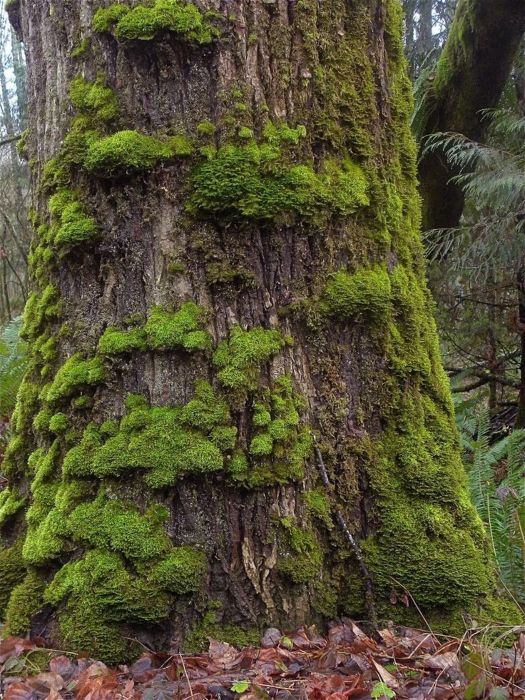
Should You Remove Lichen From Your Trees?
In most cases, there is no need to remove lichen from your trees. Since they do not harm the tree, lichen removal is often unnecessary and may result in accidental bark damage. But if the lichen growth is excessive or interfering with the tree’s health, it may warrant careful removal.
If you do choose to remove lichen, try the following:
- Manual Removal: Gently scrub the lichen off the bark with a soft brush and water. Avoid damaging the bark, as this can make the tree more susceptible to pests and diseases.
- Promote Tree Health: Healthy trees are less likely to support excessive lichen growth. Proper irrigation, tree fertilization (link), and tree pruning (link) can encourage a dense canopy, reducing light exposure to the bark and discouraging lichen growth.
- Avoid Harsh Chemicals: Using chemicals can harm the tree and surrounding environment.
Concerned about a lichen-covered tree? Want to prevent lichen from taking over? Our arborist consulting services can assess your tree’s health and recommend the best steps for care. From tree fertilization to strategic pruning, we’ll help keep your trees healthy and vibrant. Contact us today for a free tree health assessment!


